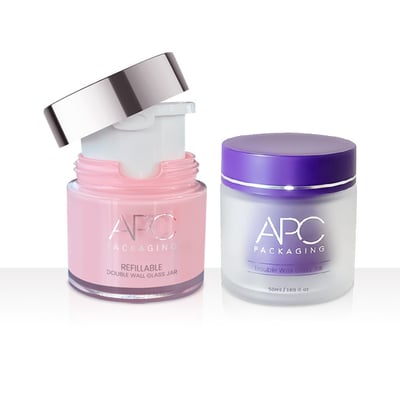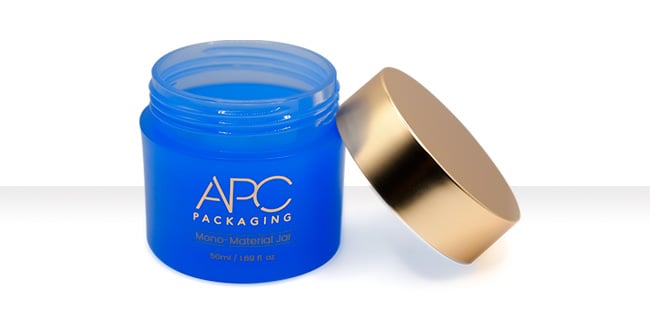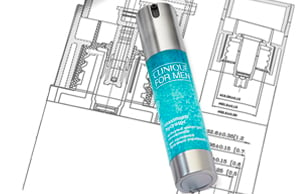In the ever-evolving world of cosmetics and personal care products, sustainability has become a paramount concern for both brands and consumers. One of the key decisions brands face is choosing between glass and plastic packaging for their products. Both materials have their merits, but they also come with distinct environmental considerations. In this blog, we will delve into the sustainability aspects of glass and plastic cosmetic packaging, comparing their environmental impacts and offering insights into making a more informed choice.
Glass Packaging: Timeless Elegance with Environmental Benefits

- Recyclability: Glass boasts an impressive recycling rate, with many recycling programs readily accepting glass containers. Unlike plastic, glass can be recycled endlessly without losing its quality, making it an ideal choice for eco-conscious consumers.
- Reduced Environmental Impact: The production of glass is less resource-intensive compared to plastic. It relies on natural raw materials such as sand, soda ash, and limestone. Moreover, the manufacturing process produces fewer greenhouse gas emissions, contributing to a lower carbon footprint.
- Preservation: Glass is impermeable, which means it doesn't interact with the product it holds. This property helps extend the shelf life of cosmetics, reducing waste due to spoilage or contamination.
- Aesthetic Appeal: Glass packaging exudes a sense of luxury and timelessness, which can elevate a brand's image. Consumers often associate glass with higher quality and are more likely to reuse or repurpose glass containers.
Plastic Packaging: Versatility and Sustainability Challenges

- Lightweight and Versatile: Plastic is lighter than glass, reducing transportation costs and emissions. It's also highly versatile, allowing for innovative packaging designs that can stand out on the shelf.
- Recyclability Challenges: While plastic can be recycled, its recycling rates are often lower than glass due to contamination issues and the variety of plastic types. Single-use plastic, in particular, poses significant challenges, as many end up in landfills or the ocean.
- Environmental Impact: The production of plastic involves the extraction of fossil fuels, contributing to carbon emissions. Additionally, plastic pollution is a global concern, with microplastics infiltrating ecosystems and harming wildlife.
- Degradation: Unlike glass, plastic can degrade over time, potentially affecting the quality of the cosmetic product it contains. This can lead to product waste and consumer dissatisfaction.
Making an Informed Choice
When deciding between glass and plastic cosmetic packaging, it's essential to consider several factors:
- Product Type: Some products, like serums and fragrances, may benefit from glass packaging to maintain their integrity, while others, such as shampoos or body washes, could be suitable for plastic containers.
- Consumer Preferences: Knowing your target audience's sustainability preferences can guide your choice. Some consumers actively seek out eco-friendly packaging, while others prioritize convenience and affordability.
- Recycling Infrastructure: Consider the availability and efficiency of recycling programs in your target markets. In regions with robust glass recycling systems, glass packaging may be a more sustainable choice.
- Brand Image: Think about the image you want to convey. Glass packaging may align better with brands aiming for a premium, environmentally conscious image.
- Lifecycle Analysis: Conduct a thorough lifecycle analysis to assess the overall environmental impact, from raw material extraction to disposal, for both glass and plastic packaging options.
Conclusion
In the quest for sustainability in the cosmetics industry, the choice between glass and plastic packaging is nuanced. Glass offers recyclability, reduced environmental impact, and product preservation benefits, while plastic excels in versatility and lightweight design. Ultimately, the best choice for your brand depends on your specific product, target audience, and commitment to sustainable practices. By carefully considering these factors, cosmetics brands can make informed decisions that align with both their business goals and the planet's well-being.








